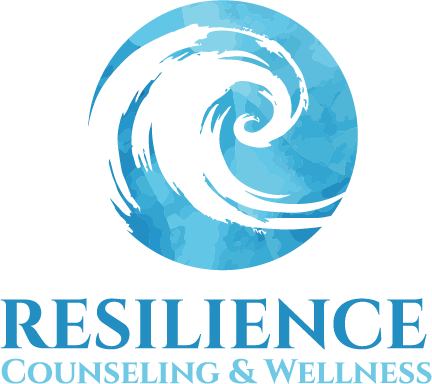Trauma-Informed, Body-Based Healing for Real, Lasting Change
At Resilience Counseling & Wellness, we offer compassionate, evidence-based Somatic and Polyvagal Therapy in Houston, TX, for individuals seeking healing from trauma, anxiety, chronic stress, and emotional disconnection. Unlike traditional talk therapy that focuses solely on the mind, somatic and polyvagal approaches help you heal through the wisdom of the body and nervous system.
If you’re feeling overwhelmed, stuck in survival mode, or disconnected from yourself, you’re not alone. And more importantly, you’re not broken. Your body is simply doing what it learned to do to protect you. With the right support, you can rewire those patterns and begin to feel safe, regulated, and alive again.
6 Best Somatic Therapists & Practitioners in Houston

Matt Landrieu
- Credentials: Licensed Clinical Social Worker
- Clientele: Adults
- Location: Houston, TX 77056
- Virtual therapy?: Yes

Helenita Frounfelkner
- Credentials: Certified Holistic Wellness Coach, Somatic Breathwork Facilitator, HypnoBirthing® Educator
- Clientele: Adults
- Location: Houston, TX 77056
- Virtual services?: Yes

Sonja Galliani
- Credentials: Licensed Professional Counselor Associate
- Clientele: Adults
- Location: Houston, TX 77056
- Virtual therapy?: Yes

Kristen Matthews
- Credentials: Licensed Professional Counselor
- Clientele: Adults
- Location: Houston, TX 77056
- Virtual therapy?: Yes

Becky Reiter
- Credentials: M.A., LPC-S, SEP, NARM
- Clientele: Adults
- Location: Houston, TX 77056
- Virtual therapy?: Yes

Ashlie Brown
- Credentials: MEd, LPC, CH, SEP
- Clientele: Adults
- Location: Houston, TX 77056
- Virtual therapy?: Yes
FAQs About Somatic Therapy
Somatic and Polyvagal Therapy blends the latest neuroscience with body-based healing practices to support nervous system regulation, emotional balance, and trauma recovery. This gentle, non-invasive approach helps you develop awareness of bodily sensations, shift long-held trauma responses, and build internal resilience, without needing to relive painful memories.
Somatic Therapy emphasizes the connection between mind and body, acknowledging the relationship between physical sensations and emotions. Adverse experiences such as stress or trauma can manifest as physical tension or pain.
Breathwork facilitates communication between the unconscious mind and the body. Modifying breathing patterns can induce relaxation, calm, and emotional release. Various breathwork techniques cater to specific needs, from relaxation to emotional processing.
Physical movement, including gentle stretching and dance, enhances bodily awareness, facilitates nonverbal emotional expression, and releases physical and emotional tension. This practice cultivates body awareness and grounding.
Mindfulness practices, such as meditation and body scans, promote present-moment awareness and non-judgmental observation of bodily sensations. These techniques foster emotional understanding and management while reducing anxiety and enhancing focus.
These methods collectively aid in managing emotions, stress, and healing from trauma. Attending to bodily sensations enables the identification of physical tension, promotes healthier coping mechanisms, and enhances self-connection. This results in improved emotional well-being, reduced anxiety and depression, and increased self-awareness.
Somatic Experiencing®: A specific type of somatic therapy developed by Dr. Peter Levine, focuses on the body to help heal trauma. It recognizes that trauma is stored not only in our minds but also as physical reactions in our bodies. SE® aims to help people notice and release the stress and energy that trauma causes, which helps the nervous system recover.
Sessions usually mix talking with exercises that make you aware of your body. Your therapist works with you to find and pay attention to physical feelings linked to trauma, like tight muscles, changes in breathing, or numbness. By focusing on these feelings in a safe space, you can learn to manage your body’s reactions and let go of stored trauma.
SE® often uses “titration,” which means gently working with traumatic experiences bit by bit. This way, you stay within a comfort zone where you can handle things without feeling too overwhelmed. Your therapist helps you move between feeling worked up and feeling calm, slowly getting better at dealing with tough emotions and feelings.
With SE®, you become more aware of what your body is telling you and learn to respond in healthier ways. This can lessen trauma symptoms like anxiety and flashbacks, and improve your overall well-being. By helping your body recover its natural ability to heal, SE® can help you feel safer, more in control, and more alive.
Polyvagal Therapy: It’s based on Dr. Stephen Porges’ Polyvagal Theory, which explains how our bodies react to stress and safety—fight, flight, freeze, and fawn. Together, we’ll figure out what triggers you and find ways to get you to a calmer, more centered place.
We’ll focus on:
- Figuring out your body’s responses: Identifying your personal triggers and how your body reacts, creating your own nervous system map.
- Feeling safe: Using things like breathwork and mindfulness to create a sense of security and well-being, and activate that calming “ventral vagal” state.
- Working through past trauma: If needed, we’ll create a safe space to process any past trauma at your own pace.
- Managing emotions: Building a toolkit of ways to handle stress and strong feelings, including exercises and relaxation techniques.
- Connecting with others: Learning better communication, boundary setting, and self-expression to build trust and security in your relationships.
These tools empower you to move from chronic survival states (like anxiety, shutdown, or overwhelm) to a felt sense of safety, connection, and self-trust.
You may have heard the phrase, “trauma is stored in the body.” This concept highlights the profound connection between our physical and emotional experiences, particularly those that are overwhelming or distressing. Trauma isn’t simply a psychological event; it leaves a lasting imprint on our nervous system, muscles, and even our cellular memory.
When we experience a traumatic event, our body goes into survival mode, activating a cascade of physiological responses like a rapid heartbeat, shallow breathing, and muscle tension. These responses are designed to protect us in the moment, but if the trauma remains unresolved, these physical sensations can become chronic, leading to a host of physical and mental health issues.
This “embodied trauma” can manifest in various ways, including chronic pain, digestive problems, sleep disturbances, anxiety, and depression. It can also lead to hypervigilance, a heightened state of alertness where the body is constantly on guard for danger, even when there is none.
This is where somatic and polyvagal therapy come in. Rather than only exploring thoughts and beliefs, we:
- Track bodily sensations to identify where trauma and stress responses live
- Support co-regulation using a safe therapeutic relationship
Strengthen your capacity to tolerate and transform difficult emotions - Restore access to ventral vagal states—where you feel calm, safe, present, and connected
When your nervous system learns that it’s safe to relax and trust again, true healing can begin—not just in your mind, but in your body and soul.
Somatic and polyvagal therapy is ideal for individuals who have experienced trauma or are facing emotional and physical challenges. It can be especially helpful for people who:
1. Have Experienced Trauma (Physical, Emotional, or Developmental)
Trauma can affect individuals in many ways, including through abuse (physical, emotional, sexual), neglect, assault, or experiences of war and natural disasters. Somatic and polyvagal therapy offers a body-based approach to healing these past wounds. Instead of reliving traumatic events, the therapy focuses on recognizing and releasing the physical tension and emotional reactions that trauma leaves behind in the body.
2. Struggle with Chronic Anxiety, Panic, or Overwhelm
Living with anxiety or panic attacks can feel like being constantly on edge. Many individuals with anxiety experience heightened physical responses, such as rapid breathing, tightness, and an increased heart rate, which can become ingrained over time. Polyvagal therapy specifically addresses these autonomic nervous system responses, helping you move from a state of constant alertness or freeze into a more balanced, regulated state. Through techniques like breathwork and mindfulness, you can reduce anxiety and find peace within your body.
3. Feel Emotionally Numb, Disconnected, or “Shut Down”
For many individuals who have experienced trauma, emotional numbness is a protective response. It can feel like you’re unable to connect with your emotions or even with others around you. Somatic therapy gently helps you reconnect with your body, emotions, and self. By exploring bodily sensations and creating a safe space to express emotions, you can start to thaw the numbness and reconnect with the world and people around you.
4. Live in a Constant State of Fight or Flight
If your body is always in fight or flight mode, you’re probably familiar with a racing heart, shallow breathing, and constant tension. This state of hypervigilance often arises from unresolved trauma or stress. Over time, it can lead to chronic fatigue, headaches, digestive issues, and trouble focusing. Through polyvagal therapy, you can learn to recognize your body’s stress responses and regulate them by activating the calming ventral vagal state. This allows you to feel more grounded and less in survival mode.
5. Have Attachment Wounds from Childhood or Relationships
Attachment wounds stem from early childhood experiences or problematic relationships. These can manifest as difficulty trusting others, feeling disconnected from loved ones, or having trouble setting healthy boundaries. Somatic therapy can help address these wounds by healing the body’s stored emotional responses. Polyvagal therapy, in particular, works on fostering a sense of safety, which is essential for forming healthy attachments and restoring trust in relationships.
6. Experience Chronic Pain, Fatigue, or Psychosomatic Symptoms
Chronic pain, fatigue, and psychosomatic symptoms often arise from unresolved emotional trauma or stress. These conditions are deeply connected to how your body processes and holds onto past experiences. Through somatic therapy, individuals can explore how trauma manifests physically and engage in body-based practices that release built-up tension, improve circulation, and enhance overall well-being. Polyvagal theory helps guide the nervous system back to balance, allowing for a reduction in chronic pain and fatigue.
7. Feel “Stuck” in Traditional Talk Therapy or Cognitive Approaches
Traditional therapy often focuses on verbalizing your experiences and processing thoughts, but this can feel insufficient for some individuals, especially those who struggle with body-based trauma or deep emotional states. If you feel that cognitive therapy hasn’t fully addressed your challenges, somatic and polyvagal therapies offer an alternative by incorporating the body and nervous system into the healing process. These therapies allow clients to experience healing on a more holistic level, involving both mind and body.
8. Those Facing Marginalization or Identity-Related Challenges
Individuals who have faced discrimination or marginalization due to their gender identity, sexual orientation, race, ethnicity, religion, or disability may carry emotional wounds tied to societal rejection or trauma. Somatic and polyvagal therapies provide a safe, affirming space where these individuals can explore their experiences, build resilience, and develop a sense of inner safety and empowerment.
9. Individuals with Chronic Stress or Trauma Related to High-Stress Occupations
Many individuals in high-stress professions, such as first responders (police officers, firefighters, paramedics), healthcare workers (doctors, nurses, surgeons), and military personnel, experience unique levels of emotional strain. Over time, these experiences can lead to burnout, emotional detachment, and symptoms of PTSD. Somatic and polyvagal therapy can help these individuals process stress in a safe, regulated manner, addressing the bodily tension, emotional exhaustion, and reactivity that accumulate from the demands of their professions.
10. Neurodivergent Individuals or Those with Sensory Processing Sensitivities
People with ADHD, autism spectrum disorder, sensory processing sensitivities, or other neurodivergent conditions often have heightened or dysregulated sensory responses to their environments. Somatic therapy provides an individualized approach to understanding these responses and learning to manage them effectively. Polyvagal theory’s focus on the nervous system can help neurodivergent individuals develop strategies for sensory regulation and resilience in environments that might otherwise feel overwhelming.
Other Areas That Benefit from Somatic and Polyvagal Therapy:
- Trauma from Grief or Loss: Somatic therapy helps you move through the physical and emotional sensations of grief and loss, allowing you to heal from these deeply personal experiences.
- Anger and Emotional Dysregulation: If you struggle with intense feelings of anger or emotional outbursts, somatic and polyvagal therapy can help regulate your emotions and build healthier ways to express and release anger.
- Addictions and Compulsive Behaviors: Many individuals turn to addictive behaviors as a way to numb or manage emotional pain. Through somatic therapy, you can work with your body’s responses to cravings and triggers, helping you gain greater control over impulses.
- Sleep Disorders: Chronic stress and unresolved trauma can disrupt sleep patterns. By calming your nervous system and regulating your responses, somatic and polyvagal therapies can improve sleep quality and restore a natural, restful sleep cycle.
At Resilience Counseling & Wellness, we make sure each session is all about you—your pace, your needs, and your unique journey. While every session is different, here’s what you can generally expect:
1. Check-In and Setting the Tone
We start by checking in with how you’re feeling today, emotionally and physically. We’ll talk about any recent experiences or stressors, and you can let me know what you’d like to focus on. It’s a relaxed, open conversation where we make sure we’re aligned on what you need right now.
- Example: “I’ve been feeling a lot of tightness in my shoulders and am anxious about work.”
This helps us shape the session to your current experience and set an intention for the work we’ll do together.
2. Mindfulness and Tuning Into Your Body
Next, we’ll dive into some mindfulness exercises to help you tune into how your body is feeling. This is all about getting more aware of any physical sensations, like tension, tightness, or even numbness. It’s a gentle way to reconnect with your body and start the process of healing.
- Example: We might guide you through some deep breathing or a body scan to notice any areas where you feel stressed, tight, or uncomfortable.
This step helps us get out of our heads and into the body, where a lot of stress and emotion is stored.
3. Exploring Physical Sensations and Emotions
Once we’re tuned in, we’ll explore what’s going on physically and emotionally. This is where we start to connect any physical sensations with what you’re feeling emotionally, whether it’s tension in your chest, a tight stomach, or something else.
- Example: If you notice tightness in your chest, we might talk about what emotions come up with that sensation (like anxiety or sadness) and see how your body reacts.
The goal here isn’t to solve everything at once, but to create awareness and space for the body to release tension.
4. Breathing and Gentle Movement
Breathwork is a big part of this approach. We’ll guide you through some breathing exercises to help calm your nervous system. Breathing deeply can activate your body’s relaxation response, helping you feel more grounded and balanced. We might also incorporate some gentle movement or stretches to release tension and help you feel more in tune with your body.
- Example: You might be guided to take slow, deep breaths or do a couple of gentle stretches to relieve stress and help you feel more relaxed.
These tools help your nervous system shift from stress to calm, which is a big part of the healing process.
5. Gentle Trauma Processing
If you’re working through past trauma, we’ll gently explore how your body holds on to it without making you relive it. We’ll focus on the physical sensations linked to past events—muscle tension, pain, or emotions—and work together to release them safely. This is where Somatic Experiencing® (SE) can come in, helping you process trauma bit by bit without overwhelming you.
- Example: If you notice tightness or discomfort when thinking about a past experience, we’ll gently explore that sensation and help you release it without forcing you to revisit the traumatic memory.
We’ll take things slowly, letting your body process the experience at a pace that feels comfortable for you.
6. Resourcing and Strengthening Your Inner Resilience
In this part of the session, we’ll focus on building emotional resilience. We’ll help you connect with things that make you feel safe and strong—whether that’s a memory, a place, or even a feeling. These “resources” are like anchors that you can use when you need to feel grounded.
- Example: We might ask you to think about a time when you felt calm and at peace. By connecting with that feeling, you can build emotional strength to handle stressful moments.
These resources help you feel more resilient and empowered as you work through tough emotions.
7. Grounding and Wrapping Up
As we approach the end of the session, we’ll bring everything together by doing some grounding exercises to help you feel stable and calm. This step ensures that you leave the session feeling balanced and clear-headed, rather than overwhelmed.
- Example: We might guide you to focus on your breath again or practice some light stretching to help you feel more present and grounded.
We’ll take a moment to reflect on what came up during the session and discuss any next steps or self-care practices to continue the work at home.
Every Session Is Unique
The best part about somatic and polyvagal therapy is that it’s entirely tailored to your needs. No two sessions are the same, and you’re in control of the process. We always move at a pace that feels comfortable for you, making sure you never have to go deeper than you’re ready for.
Ready to Begin Your Journey Back to Yourself?
Whether you’re recovering from trauma, navigating life transitions, or simply yearning for a deeper connection to yourself, somatic and polyvagal therapy can help you come home to your body and your life.
We’re here to walk alongside you—compassionately, gently, and skillfully.

